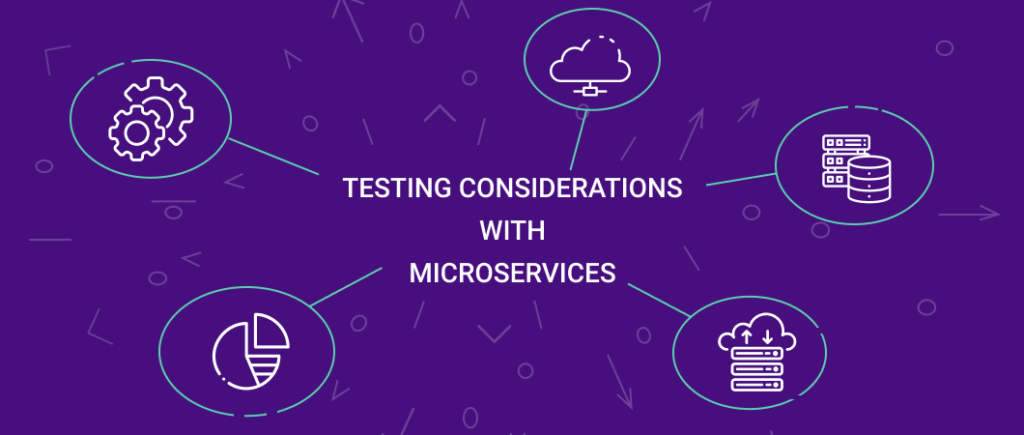Last updated on December 24th, 2020
Microservices adoption has picked up at an immense pace in the last few years. Unlike traditional applications where every component is tightly coupled and dependent on each other, microservices allows them to be independent. This allows development teams to easily incorporate new features and changes – without having to completely rebuild and redeploy the entire application.
Although the concept paves the way for faster and improved software development, testing in microservices isn’t straightforward.
The uniqueness of microservices testing
Testers have to constantly:
- Cater to the vast number of services that get created even as code is being moved from traditional architecture to a microservices-based architecture.
- Prioritize resource allocation for components to be tested individually and then together in a system.
- Update their knowledge and know-how of existing and upcoming services while writing new test cases for each one of them.
- Drive efforts in testing or redesigning the structure of the application – especially if it is part of a large and complex system.
- Maintain multiple libraries and database versions and agree to follow a standard procedure for testing various services.
- Enable communication and collaboration between different members working on different components and interfaces.
Top testing considerations
When it comes to microservices, traditional approaches to testing will probably fall short in several significant ways. One of the main reasons is their inability to scale. Most apps built on microservices use dozens of services. There is a high likelihood that not all of them will be available on staging in the same form as they are likely to be in while in production. Since microservices dynamically scale up and share the demand, they demand a different approach to testing.
Here are the 5 top testing considerations with microservices:
Given the several different components that make up a microservices-based application, it is extremely important for testers to test each discrete service independently – before testing the whole system. Creating simple tests that call out each service and compares a known set of inputs against the expected output is a great way to reveal problems that exist in each individual service, making mitigation and rectification quick and uncomplicated.
2. Once integrated, test for overall functionality:
Once each service is tested individually, testers need to integrate all the services together and identify and test key functional elements of the entire application. Make sure to create test scripts every time the microservice is updated, so you can determine if the intended output deviates due to the changes that have been introduced.
3. Leverage cloud to test across different setups:
Although microservices-based architectures improve the quality and agility of applications, they are resource-intensive. So, instead of creating small local staging environments to test code, leveraging the cloud is a great way to test code across different setups. Teams can dynamically allocate resources – as and when needed – and free them as tests have been completed, thus overcoming the problem of resource constraints.
4. Use Kubernetes or Canary testing to test the impact of changes:
Minor changes that are made to individual components in a microservices-based architecture can have a huge impact on the overall functioning of the system. Kubernetes allows testers to create staging environments on the fly, test code across minor variations, and determine the impact of those variations – once the code is deployed to production. Similarly, Canary testing allows testers to launch one node into production, determine its impact on the overall system, and discover if the feature is introducing risk or affecting the user experience.
5. Embrace AI-powered test automation to speed up testing:
Given how independent every component in a microservices architecture is, AI-powered test automation allows testers to test interactions between objects, check APIs, interfaces, communication paths, and service components as well as assess logic. Using machine learning techniques, testers can get immediate insight into issues and inconsistencies that are triggered by the new code and take action to ensure that all the units within the microservices architecture work as expected.
Microservices and containerization, which were once distant buzzwords for the future, have now become an integral part of the software development world. Achieving success with microservices requires testers to take completely different approaches to testing. Testing each service individually and then as part of a larger system is a great way to ensure the software performs as intended. In addition, embracing cloud, Kubernetes, Canary testing, and AI-powered test automation can also help in driving the best outcomes, i.e. a well-tested high-quality end product.



